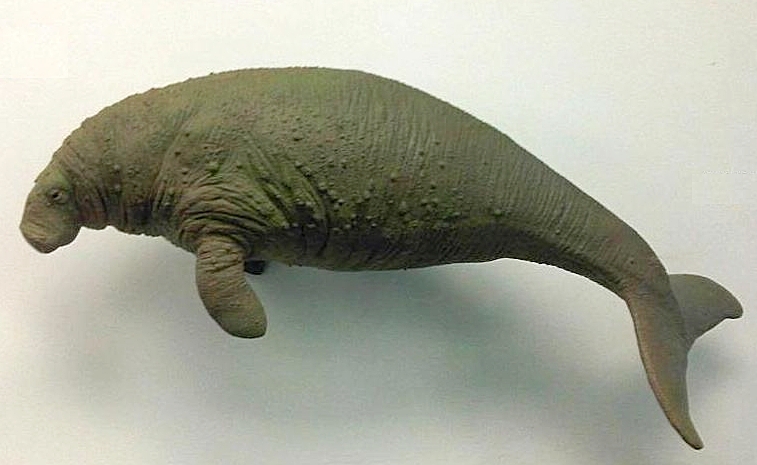Hello ladies and gents this is the Viking telling you that today we are talking about
STELLERS SEA COW
Steller's sea cow was quickly wiped out by fur traders, seal hunters, and others who followed Vitus Bering's route past its habitat to Alaska. It was also hunted to collect its valuable subcutaneous fat. The animal was hunted and used by Ivan Krassilnikov in 1754 and Ivan Korovin 1762, but Dimitri Bragin, in 1772, and others later, did not see it. Brandt thus concluded that by 1768, twenty-seven years after it had been discovered by Europeans, the species was extinct. In 1887, Stejneger estimated that there had been fewer than 1,500 individuals remaining at the time of Steller's discovery, and argued there was already an immediate danger of the sea cow's extinction.
It was also hunted to collect its valuable subcutaneous fat. The animal was hunted and used by Ivan Krassilnikov in 1754 and Ivan Korovin 1762, but Dimitri Bragin, in 1772, and others later, did not see it. Brandt thus concluded that by 1768, twenty-seven years after it had been discovered by Europeans, the species was extinct. In 1887, Stejneger estimated that there had been fewer than 1,500 individuals remaining at the time of Steller's discovery, and argued there was already an immediate danger of the sea cow's extinction.
The first attempt to hunt the animal by Steller and the other crew members was unsuccessful due to its strength and thick hide. They had attempted to impale it and haul it to shore using a large hook and heavy cable, but the crew could not pierce its skin. In a second attempt a month later, a harpooner speared an animal, and men on shore hauled it in while others repeatedly stabbed it with bayonets.
It was dragged into shallow waters, and the crew waited until the tide receded and it was beached to butcher it. After this, they were hunted with relative ease, the challenge being in hauling the animal back to shore. This bounty inspired maritime fur traders to detour to the Commander Islands and restock their food supplies during North Pacific expeditions.
Interaction with aboriginals
The sea otter is a keystone species and keeps sea urchin populations in check. Its depopulation in the Aleutian Islands may have led to the decline of kelp and subsequently of sea cows.
The presence of Steller's sea cows in the Aleutian Islands may have caused the Aleut people to migrate westward to hunt them. This possibly led to the sea cow's extinction in that area, assuming the animals survived in that region into the Holocene epoch, but there is no archaeological evidence.
It has also been argued that the decline of Steller's sea cow may have been an indirect effect of the harvesting of sea otters by the area's aboriginal people. With the otter population reduced, sea urchin population would have increased, in turn reducing the stock of kelp, its principal food.
In historic times, though, aboriginal hunting had depleted sea otter populations only in localized areas, and as the sea cow would have been easy prey for aboriginal hunters, accessible populations may have been exterminated with or without simultaneous otter hunting. In any event, the range of the sea cow was limited to coastal areas off uninhabited islands by the time Bering arrived, and the animal was already endangered.
One factor potentially leading to extinction of Steller's sea cow, specifically off the coast of St. Lawrence Island, was the Siberian Yupik people who have inhabited St. Lawrence island for 2,000 years. They may have hunted the sea cows into extinction, as the natives have a dietary culture heavily dependent upon marine mammals. The onset of the Medieval Warm Period which reduced the availability of kelp may have also been the cause for their local extinction in that area.[

Comments
Post a Comment